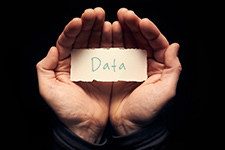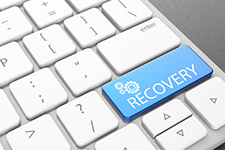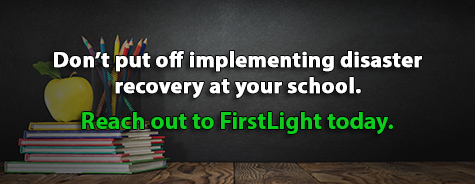
Today, schools are taking on more technology initiatives. Teachers are increasingly using online resources in the classroom. They also use email, social media, and instant messaging to communicate with students and parents. Most K-12 schools use IT environments to process student records and data.
Unfortunately, lack of funds may cause K-12 institutions to neglect backup and disaster recovery. The Center on Budget and Policy Priorities reported that education funding for several Northeastern states has been cut recently. For example, the total state funding per student in both Maine and New Jersey is currently less than it was 10 years ago.
Reduced funding may force schools to stick with outdated forms of backup and recovery. Many schools still use magnetic tape or optical disks to back up their files. Most times, these tapes are stored on-premises or nearby (e.g., at another location within the school district), putting them potentially at risk.
K-12 institutions need to find affordable ways to implement disaster recovery so that they can preserve uninterrupted access to education, protect student records, and position students for future success.
A Home Away From Home for Data
 Most K-12 school districts can’t afford the expense of creating redundant IT infrastructure at a secondary location. They presume that their only option is to back up onto physical storage media and store that data on-site or in an administration building with available space, but this does not always satisfy the best practice of following the “3-2-1 Rule” (three copies of the data, 2 different storage media and at least 1 copy off-site).
Most K-12 school districts can’t afford the expense of creating redundant IT infrastructure at a secondary location. They presume that their only option is to back up onto physical storage media and store that data on-site or in an administration building with available space, but this does not always satisfy the best practice of following the “3-2-1 Rule” (three copies of the data, 2 different storage media and at least 1 copy off-site).
This puts schools at risk when a local disaster strikes. When backups are stored on-premises or in close proximity to the school, a natural disaster could destroy all original data as well as copies.
On Your Not-So-Permanent Record
Schools need an effective disaster recovery strategy so they can preserve important records. K-12 administrative offices use technology to store and access student and financial records.
Maintenance logs and human resources information are also stored in databases. Teachers and administrators depend on technology to conduct registration and record grades.
If student records are lost or compromised after a disaster, children’s futures may be at risk. These records are needed to promote students to the next grade, determine if they are ready for graduation, and send as credentials with job or college applications.
Falling Behind
 After a disaster, students need to be able to resume their education as soon as possible. The longer students are out of the classroom, the less likely they are to retain the lessons they have learned. Winter storms regularly threaten schools in the Northeast from November through April, bringing the risk of school closings and potential IT infrastructure damage.
After a disaster, students need to be able to resume their education as soon as possible. The longer students are out of the classroom, the less likely they are to retain the lessons they have learned. Winter storms regularly threaten schools in the Northeast from November through April, bringing the risk of school closings and potential IT infrastructure damage.
Most school districts have a limited number of days-off built into their calendars. If a disaster disables the school’s systems for days or even weeks, it will be a challenge for students to make up the lost time. Outages may also impact students’ ability to prepare for scheduled standardized tests.
Using Cloud for Disaster Recovery
Cloud-based disaster recovery is the ideal way for K-12 institutions to implement disaster recovery. Disaster recovery as a service (DRaaS) allows schools to back up and restore information without needing a second physical location. With DRaaS, schools can instantly fail over to the cloud, giving them uninterrupted access to records and online educational resources.
DRaaS is also very affordable for cash-strapped schools. Instead of paying upfront for infrastructure hardware, schools can pay for cloud services at an affordable and predictable monthly rate.
FirstLight is experienced in providing disaster recovery and telecom solutions for K-12 education. We support our cloud solutions with an extensive fiber optic network that delivers exceptional bandwidth.
Our connectivity solutions are cost-effective for schools because of our participation in the E-Rate program, which funds telecommunication and Internet services for schools. For more information on FirstLight’s solutions for educational institutions, click here.
Don’t put off implementing disaster recovery at your school. Reach out to FirstLight today.





















